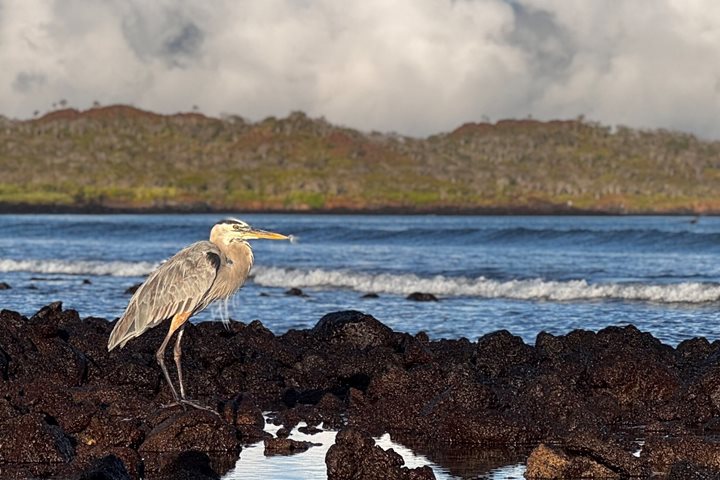It was 6 am and the National Geographic Endeavour neared its anchorage as the sun first broke over the top of Alcedo Volcano, one out of five active volcanoes that make up Isabela Island. This morning our plan was to visit an area known as Urbina Bay. Located half way down the west coast of the largest island of the archipelago, Urbina Bay is a recently uplifted coastal reef that nowadays harbors a lush green forest of salt and drought tolerating plants.
After breakfast, we landed on the volcanic black sand beach. The top of the beach is littered with Pacific green sea turtle nests. As we made our way through the trails of this first lush and later arid place, deposits of calcite on the volcanic rock remind us of the subaquatic nature of this terrain prior to the uplift of 1954. As we searched for Galapagos land iguanas, we came across various iguana burrows where the animals had brought remnants of many underwater invertebrates to the surface. As the morning heat rose, we made our way back to the beach for a refreshing swim before heading back to the ship for a botany presentation by our naturalist Jeffo Marquez.
During lunch time, Captain Fausto Hinojosa took the National Geographic Endeavour to our next anchorage. Further north up the west coast of Isabela lies Tagus Cove, which would be our last opportunity today to explore the underwater and subaquatic environment while snorkeling and kayaking. Tagus Cove proved to be an excellent area to observe nesting flightless cormorants and fishing Galapagos penguins, both along the shoreline and in the water, despite somewhat limited visibility.
As yet another incredible day drew to an end, we visited the only trail at Tagus Cove in “Darwin’s footsteps”. As we returned to our ship, we watched the western sun sinking over Volcano “La Cumbre” on neighboring Fernandina Island.







